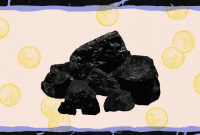Support strong Canadian climate journalism for 2025
When Kathryn Belcher noticed employees at her local grocery store dumping trays of uneaten same-day baked goods into a trash bin earlier this month, she was outraged. She knew the buns and bagels were still edible — they'd been for sale ten minutes earlier — and it made the Calgary resident "steam" that they were going to waste.
Belcher's neighbourhood grocery store is not alone. From farm to household compost bin, over half of all food produced in Canada is wasted, about a third of it is still edible. That waste generates nearly 56.6 million tons of greenhouse gases (GHGs), including a significant amount of methane. Methane is a GHG roughly 80 times more potent than CO2 and a key contributor to global heating.
Food waste also represents a loss of about $49 billion at a time when nearly one-fifth of Canadians can't afford enough to eat.
But while the problem is well-known to many Canadians — with numerous reports, studies and food waste reduction initiatives announced each year — Canada has no laws to curb the practice, unlike some other countries, notably France. And while experts say Canada's laws could definitely be stronger, successfully reducing the amount of food wasted each year is trickier than simply banning the practice.
"It's very frustrating (and) a systemic problem," said Tammara Soma, a food waste expert and the research director of Simon Fraser University's Food Systems Lab.
The biggest problem when it comes to edible food being wasted is often that grocery stores and farms simply have too much food in short periods of time and can’t sell, process or donate it fast enough, she said. Food retailers constantly refresh their shelves, even when they still contain edible food. Food charities or other businesses that transform unwanted food into new products like juice can sometimes take this food, but not always.
The problem is exacerbated by esthetic concerns about how some food items look — particularly produce and fruits — and best-before labelling laws, added Heather McLeod-Kilmurray, a food law expert at the University of Ottawa.
"Best before" means exactly that, she said — the product is at its freshest before that date but still edible afterwards. Expiry dates mean the product is no longer edible, and they are only required on baby formula and about four other products in Canada, she said.
Some foods like baked goods, produce and fruits are particularly susceptible to being wasted because they reach their best-before date so quickly, Soma added.
Even organizations that collect grocers' unused food often don’t have enough people or infrastructure to handle the massive, unpredictable influxes of food retailers are trying to discard — think pallets packed with bread or yogurt. The excess goods might also not be nutritional enough or culturally suitable for the people food charities are serving.
Donations are an elegant way for food retailers to dispose of waste, but this system ends up "offloading" waste on charities with fewer resources to properly manage the food.
"We don't have a system that is designed in a way that can absorb all of that," Soma said.
Still, it is not an insurmountable problem. Take France, which in 2016 started banning supermarkets and large food service establishments from wasting edible products. The law requires these establishments to work with local food rescue organizations to ensure they can handle the donations. It also prevents them from intentionally destroying food to prevent dumpster diving, for instance, by dousing it with bleach.
According to Marie Mourad, a zero waste and sustainability consultant, the law initially fuelled a bump in donations — that didn't last. Before long, food retailers started offering more discount sales and retailing their soon-to-be-discarded food on special apps designed for that purpose.
"That was an unintended consequence," she said.
From a climate perspective, France's law has led to a positive reduction in food waste. However, the law had mixed social impacts by forcing food-insecure people to buy the food they once may have been able to get through a food charity, she said. Ideally, similar future laws in France or elsewhere would ensure that food-insecure people do not depend on donations to eat, she said.
Back in Canada, Soma said that reducing the amount of edible food we waste will take a wholesale change in how we produce, distribute, process and sell food. That could include better demand planning by retailers, more collaboration between food charities and grocers or efforts to support companies that can transform unwanted foods into new products, like juice or cooked meals.
"You need a different kind of system and infrastructure," she said.






Comments